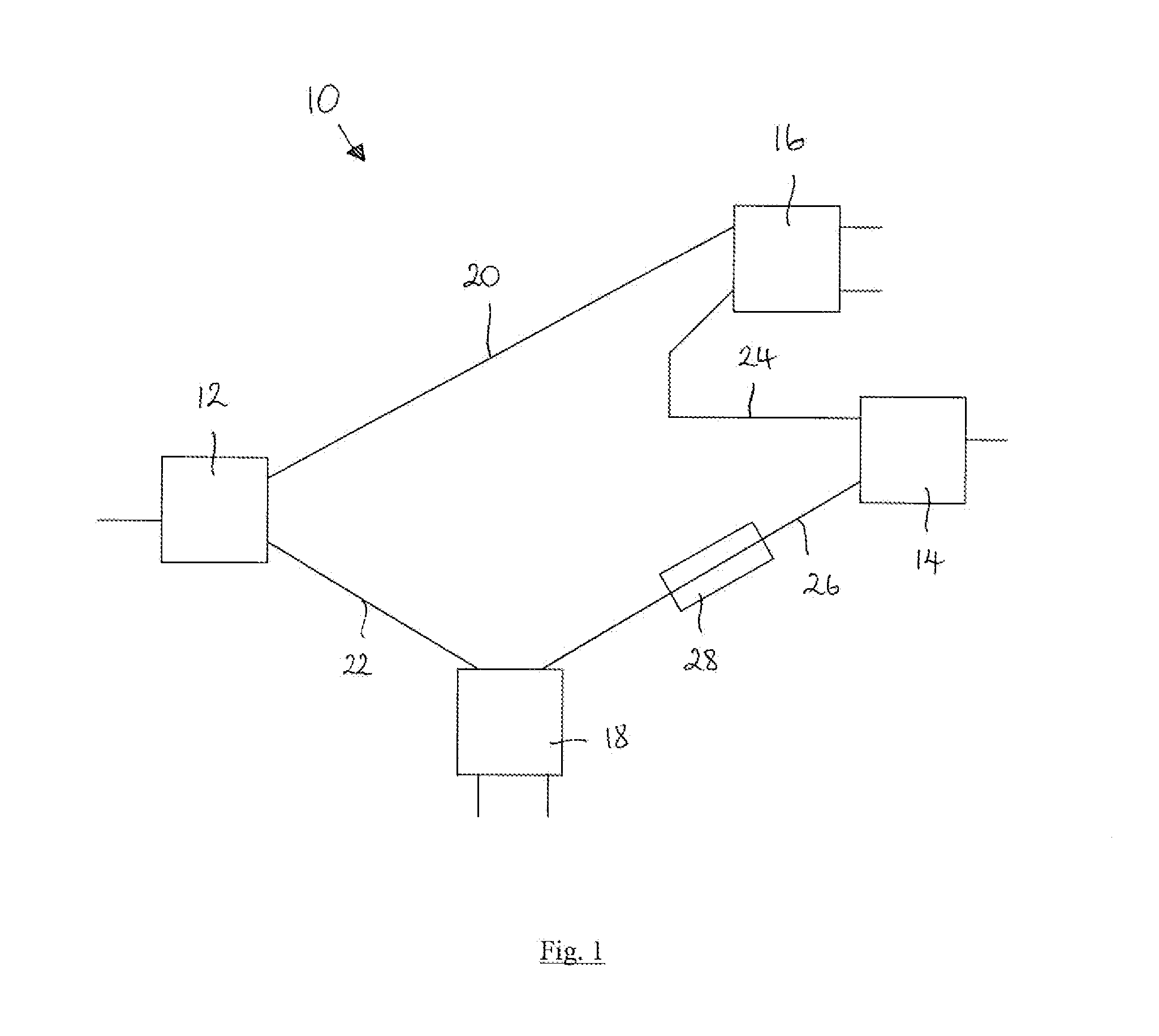Planar Waveguide Circuit and Optical Receiver
a waveguide circuit and optical receiver technology, applied in the field of planar waveguide circuit and optical receiver, can solve the problems of weak degradation of coherent optical receiver performance, prior art 90 degree optical hybrids can also suffer the problem of additional phase shift, degrading in-phase and quadrature signals, etc., to facilitate waveguide arrangement
- Summary
- Abstract
- Description
- Claims
- Application Information
AI Technical Summary
Benefits of technology
Problems solved by technology
Method used
Image
Examples
first embodiment
the invention provides a planar waveguide circuit 10 as shown in FIG. 1. The planar waveguide circuit 10 comprises a first optical splitter 12, a second optical splitter 14, a first optical signal combiner 16, a second optical signal combiner 18, four optical waveguides 20, 22, 24, 26 and a phase-shifter 28.
The first optical splitter 12 is arranged to receive an input optical signal. The second optical splitter 14 is arranged to receive a reference optical signal. Each optical splitter 12, 14 is arranged to split the optical power of a received optical signal into an in-phase component and a quadrature-phase component, respectively provided at the outputs of the optical splitters 12, 14. The construction and operation of optical splitters will be well known to the person skilled in the art.
The first and second optical waveguides 20, 22 are arranged to couple first and second outputs of the first optical splitter 12 to respective inputs of the first and second optical signal combiner...
PUM
| Property | Measurement | Unit |
|---|---|---|
| phase | aaaaa | aaaaa |
| path lengths | aaaaa | aaaaa |
| equivalent path lengths | aaaaa | aaaaa |
Abstract
Description
Claims
Application Information
 Login to View More
Login to View More - R&D
- Intellectual Property
- Life Sciences
- Materials
- Tech Scout
- Unparalleled Data Quality
- Higher Quality Content
- 60% Fewer Hallucinations
Browse by: Latest US Patents, China's latest patents, Technical Efficacy Thesaurus, Application Domain, Technology Topic, Popular Technical Reports.
© 2025 PatSnap. All rights reserved.Legal|Privacy policy|Modern Slavery Act Transparency Statement|Sitemap|About US| Contact US: help@patsnap.com



